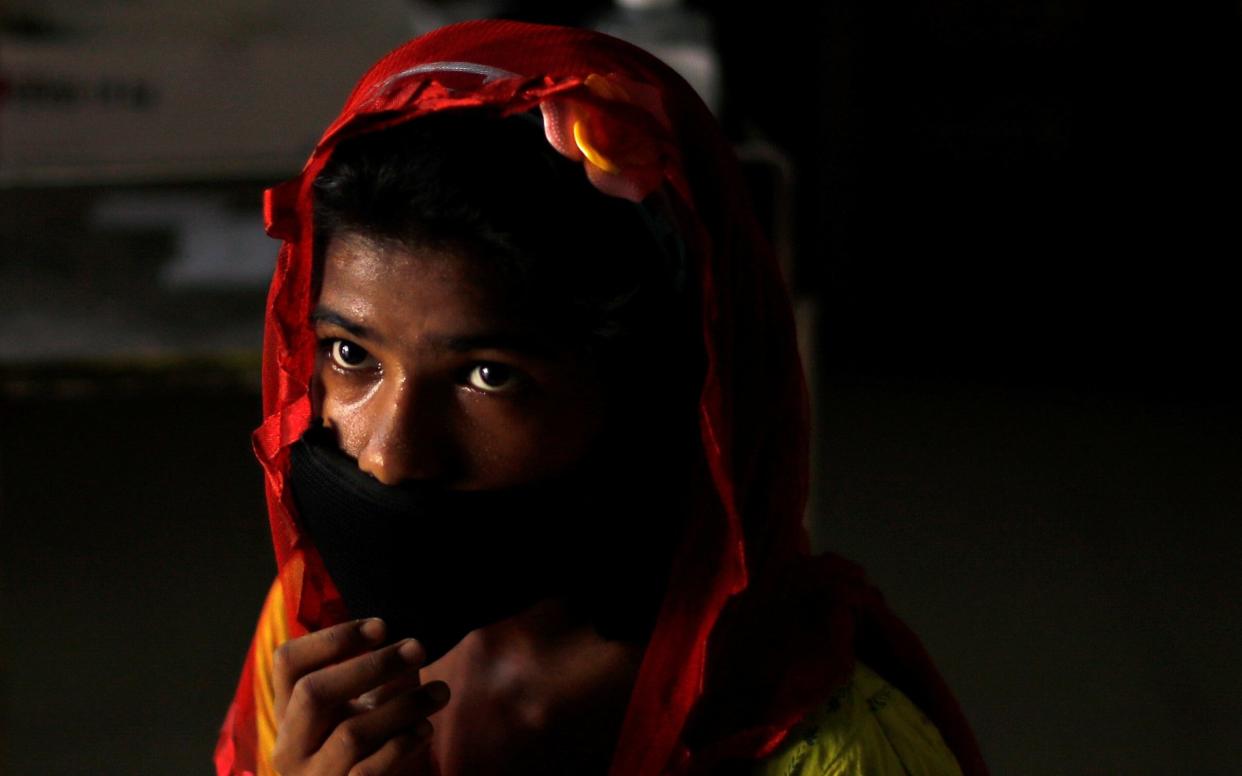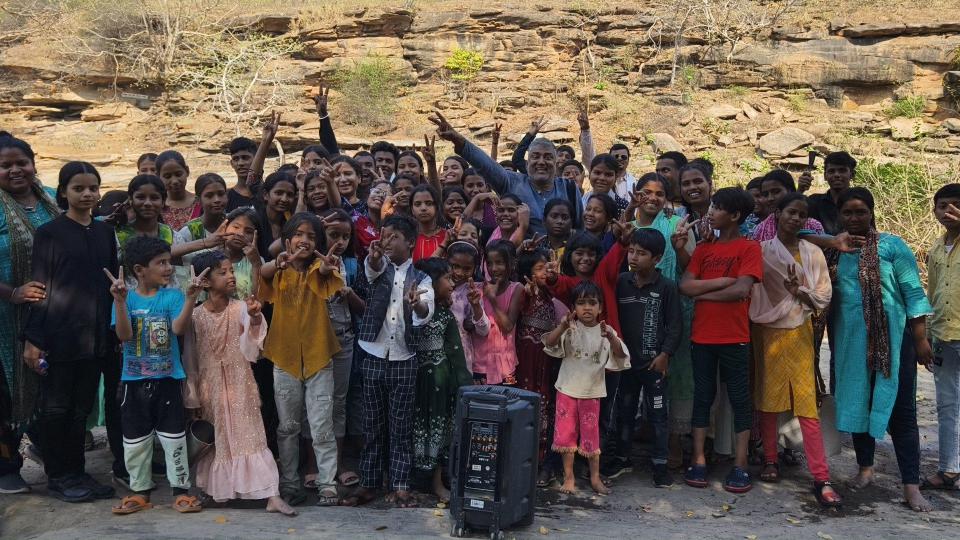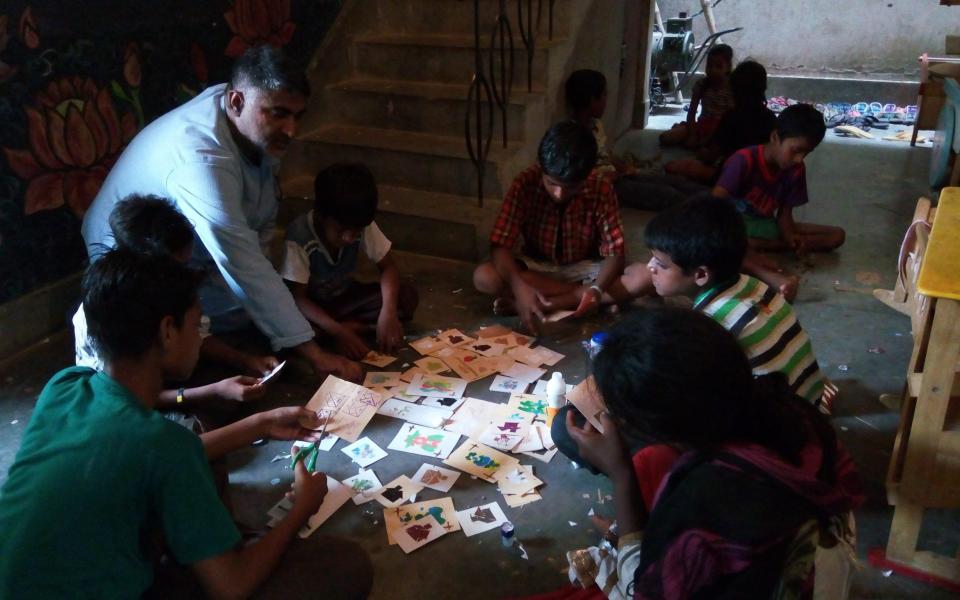The undercover sting that freed more than 100 children from sex traffickers

In the narrow alleyways of Meerganj, the notorious red light district in the city of Allahbad, a man dressed in a brown kurta with a rucksack walks past the dilapidated brothels shouting ‘lipsticks for sale, good prices.’
He barely warrants a glance, one of dozens of street sellers who stroll down the alley daily, hawking their wares, a common sight in the hustle and bustle of cities in India.
Word has got around that he’s selling good quality products like Max Factor and other brands the brothel girls recognise from billboards featuring their favourite Bollywood actresses. He’s cheaper than the other sellers and lets them pay in instalments.
A group of young girls flock to him, picking up bright lipsticks and face powders, to make them look older than they are, or perhaps not, depending on the client’s preferences.
But this is no ordinary seller. He is from Guria India, an organisation which rescues and rehabilitates women and underage girls trapped in the sex trade.

He has been working undercover, disguised as a cosmetics seller, gathering evidence of victims of traffickers who have been forced into sex work, many of whom are underage and often thousands of miles away from home.
“You are working on a razor’s edge. There are no second chances. One wrong move and you could be killed. It’s not like a movie where you get a retake,” says Ajeet Singh, Director of Guria India.
The nature of trafficking is changing and so activists are having to find new and innovative means to take them on.
Singh said he came up with the idea of posing as a make-up seller after he found that the brothel owners were always one step ahead of him.
“It was always very difficult to rescue the girls because someone would leak the information and the brothel keepers would move the girls. The girls were not a priority for the system, so the police were not helpful. We had to be proactive in getting the evidence.”

Using rudimentary equipment he bought from Delhi, including spy cams concealed in a pen and button, he began scouring the streets of the red light district for almost a year.
“Make-up is something very enticing for girls. If you go to India, you’ll see street sellers in every city so I knew I would blend in,” he said.
“The girls are unable to say anything because they are always being policed. You can’t ask questions, you won’t get the evidence on a silver platter. But when you are going around, you hear things and see things,” Singh explains, sitting in a nondescript office, piles of cardboard files all over the floor, documenting the thousands of girls they have rescued over the years, approximately 4,000 at last count.
“Most of the time the girls are locked up and they are only allowed out when a customer comes in. To ensure they are not interacting with the customers, the brothel keepers are always banging on the door and take away the mobiles of the customers.”
As a result of an 11-month long operation, conducted before the pandemic, Guria India were able to rescue 136 underage victims of traffickers, resulting in 61 brothels being shut down.
Social media ‘weapon of choice’ for traffickers
The sting, which was signed off by local people, used undercover filming to collect evidence against offenders. When enough had been gathered, ten members of the Guria India team joined police as they carried out dawn raids, using iron cutters to access properties where the victims were being held.
There are an estimated 1.2 million children under 18 working in brothels in India, many of whom have been victims of sex traffickers. Approximately 75 per cent of the cases Guria India dealt with involved under age victims ranging from just six months to 17.
The majority of these trafficked children are from lower castes and more than half of them are from families living below the poverty line.
While many of the girls sold to brothels are trafficked by relatives or family friends, in recent years, social media, with its low-risk and high rewards, has become the weapon of choice of traffickers, luring victims in with lucrative job offers or promises of marriage.
“The internet and exploitative romantic relationships are key factors for trafficking in recent times,” said children’s rights activist Bharti Ali.
“Often, the police don’t start their search in cases of adolescent girls immediately as they believe it to be a case of elopement. Many cases end up in girls being sold further by the boy/person they trusted or who promised them false marriage.
“When girls go missing, parents often try to search within their own community, her friends and relatives. This is when they lose critical time. When they suspect that she may have eloped, they may tend to not report at all to protect family honour … The girls too are unable to report as the traffickers keep a close watch on them.”

For victims of traffickers, their introduction into the world of prostitution is a brutal and violent one, in which they face beatings, gang rape and starvation. Some victims also reported having chilli powder placed on their genitalia and being subjected to electric shocks.
Among the girls they have rescued is Sarita, who was just 12-years-old when she was sold to a sex trafficker by her older brother and was transported 700 km away to work in a brothel.
“My mum was working in Mumbai and I lived with my sister. My brother was a drug addict. He told me he was taking me to see my mum but instead he sold me to a trafficker. I was locked in a room and beaten and raped by several men. I managed to find a phone and called my mum,” she said.
Sarita’s mother, along with the police and Guria India activists, were able to rescue her and relocate the family. However, the majority of victims are not so lucky. India remains a socially conservative society and victims of trafficking will often be ostracised by their families and community.
Rescuing victims of trafficking is only half the battle, while keeping them out of the hands of traffickers presents another challenge.
Rehabilitating victims back into a society which was already hostile to them in the first place is difficult and often the girls will end up falling back into the hands of traffickers.
In one case, 57 girls who were rescued by Guria were sent to a shelter home in Agra for rehabilitation, but were re-trafficked by the superintendent of the centre. Just this week, the superintendent was acquitted by the Supreme Court and Guria India is currently fighting the decision.
Despite the setbacks, Singh remains hopeful. “Although I don’t think we can eradicate child prostitution in my lifetime, I’m hopeful we can set the foundations to make the change,” he said.
And sometimes all it takes is a rucksack and a Max Factor lipstick.
Protect yourself and your family by learning more about Global Health Security

 Yahoo News
Yahoo News 
